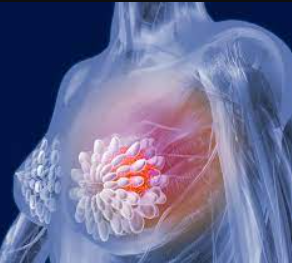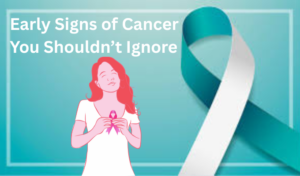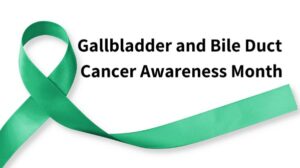Breast cancer is one of the most common cancers affecting women worldwide. With millions of cases diagnosed every year, raising awareness about this disease is crucial to improving early detection and survival rates. October is globally recognised as Breast Cancer Awareness Month, an important time to encourage regular screenings, promote education, and spread hope through the stories of survivors. Early detection can save lives, making it essential for everyone to understand the signs, risk factors, prevention methods, and treatment options available.
Signs and Symptoms of Breast Cancer
Understanding the early signs and symptoms of breast cancer can lead to prompt diagnosis and better outcomes. Here are some common indicators to be aware of:
- Lump or Mass: A new lump in the breast or underarm (armpit) is the most common sign. These lumps are often hard, painless, and immobile, but any new mass should be checked by a healthcare professional.
- Changes in Breast Shape or Size: An unexplained change in the breast’s size, shape, or appearance could signal underlying issues.
- Skin Changes: Dimpling or puckering of the skin on the breast, resembling the texture of an orange peel, may indicate cancer.
- Nipple Changes: A newly inverted nipple or nipple discharge that is not related to breastfeeding should be evaluated by a doctor.
- Redness or Scaling: The skin of the breast, nipple, or areola can become red, dry, or scaly, which can signal potential breast cancer.
These symptoms don’t always mean cancer, but they warrant further investigation by a healthcare professional.
Risk Factors for Breast Cancer
Several risk factors can increase the likelihood of developing breast cancer. While some are beyond an individual’s control, others can be managed through lifestyle changes.
Uncontrollable Risk Factors
Age: The risk of breast cancer increases with age, with most diagnoses occurring in women over 50.
Family History and Genetics: Having close relatives (mother, sister, or daughter) with breast cancer can increase the risk. Genetic mutations like BRCA1 and BRCA2 also raise the likelihood.
Personal History of Breast Cancer: Women who have had breast cancer in one breast have a higher chance of developing it in the other breast.
Menstruation and Menopause: Starting menstruation before age 12 or beginning menopause after 55 increases risk due to prolonged exposure to estrogen and progesterone.
Controllable Risk Factors
Lifestyle Choices: Lack of physical activity, excessive alcohol consumption, and being overweight—especially after menopause—are all linked to higher breast cancer risk.
Reproductive History: Having children later in life or not breastfeeding may increase the risk.
Hormone Replacement Therapy (HRT): Long-term use of HRT has been associated with an increased risk of breast cancer.
Smoking: Smoking is linked to many types of cancer, including breast cancer.
Prevention of Breast Cancer
While not all cases of breast cancer can be prevented, some steps can be taken to reduce the risk:
Regular Screenings: Early detection through mammograms and self-breast exams can help identify cancer in its earliest stages. Women aged 40 and above are encouraged to get annual mammograms.
Healthy Lifestyle: Maintaining a healthy weight, engaging in regular physical activity, and reducing alcohol intake are proven ways to reduce breast cancer risk.
Diet and Nutrition: A diet rich in fruits, vegetables, whole grains, and lean proteins, along with the avoidance of processed foods and sugar, can help in reducing the risk of many cancers, including breast cancer.
Avoid Smoking: Quitting smoking can significantly reduce the risk of developing many types of cancer, including breast cancer.
Limit Hormone Replacement Therapy: If HRT is necessary, it is important to use the lowest effective dose for the shortest possible time and regularly review with a doctor.
Treatment Options for Breast Cancer
If diagnosed with breast cancer, there are several treatment options available depending on the type and stage of the cancer, as well as the overall health of the patient. Treatment often involves one or more of the following approaches:
1. Surgery
Lumpectomy: Removal of the cancerous tissue within the breast while conserving as much of the breast as possible.
Mastectomy: Complete removal of one or both breasts to eliminate cancer.
2. Radiation Therapy
This treatment uses high-energy rays to target and kill cancer cells in a localized area. It is often used after surgery to eliminate any remaining cancerous cells.
3. Chemotherapy
Chemotherapy involves the use of drugs to kill cancer cells or slow their growth. It may be given before surgery to shrink a tumour or after surgery to reduce the risk of cancer returning.
4. Hormone Therapy
Hormone therapy is used for cancers that are sensitive to hormones. It works by either lowering the body’s estrogen levels or blocking estrogen receptors on cancer cells to slow or stop their growth.
5. Targeted Therapy
This treatment involves the use of drugs that specifically target cancer cells while leaving healthy cells relatively unharmed. It is a more advanced treatment that can be highly effective for certain types of breast cancer.
October: Breast Cancer Awareness Month
October is Breast Cancer Awareness Month, a time dedicated to raising awareness about breast cancer, promoting early detection, and supporting those affected by the disease. During this month, various organisations and healthcare providers host events, offer free screenings, and educate the public about prevention and treatment options. It’s also a time to celebrate survivors and remember those who have lost their battle with the disease.

This month, we encourage everyone to participate in awareness activities, wear pink to show support, and spread the message about the importance of early detection.
Frequently Asked Questions (FAQs)
1. How often should I get a mammogram?
Women over 40 should typically get a mammogram once a year. However, depending on individual risk factors, your doctor may recommend starting earlier or screening more frequently.
2. Can men get breast cancer?
Yes, while rare, men can also develop breast cancer. Men should be aware of the same warning signs, such as lumps or changes in breast tissue.
3. Does a family history of breast cancer mean I will get it?
Having a family history increases your risk, but it does not guarantee you will develop breast cancer. Regular screenings and lifestyle changes can help lower your risk.
In conclusion, Breast Cancer Awareness Month serves as a vital reminder to prioritise our health and be proactive in the fight against breast cancer. Early detection, awareness, and healthy living are our best defences. Whether you’re at risk or not, knowing the signs, symptoms, and prevention strategies can save lives. Spread the message, get screened, and stay informed!




